Our Visit to the RAF Museum, London
December, 2008
Traci and I (Brooke) met up with SF3, Wurzel, and Laura (Mrs. Wurzel) at the
RAF Museum in London. Below are some pictures taken by Traci showing a selection
of aircraft (not every one in the collection).
In the recent Battle of Britain scenario in Aces High, SF3 was the CO of the
RAF. Wurzel was a pilot on the RAF side, so he got to meet his Commanding Officer.
I flew Bf 109's on the LW side, and fortunately for me, no fist fight developed.
Grahame-White Factory
We started out in the Grahame-White factory section of the museum. It is an
original building of the Grahame-White Company, which built aircraft during
WWI. The building was taken down and moved from its original site in Hendon
to the RAF Museum and houses WWI aircraft.
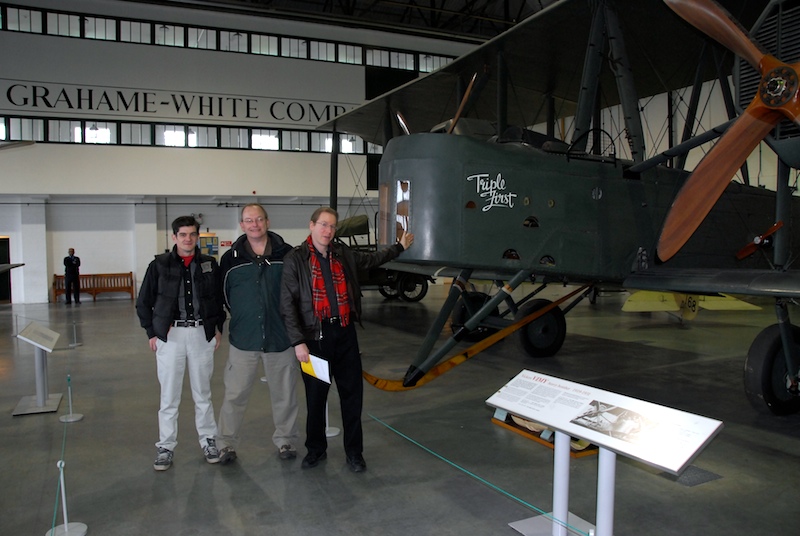
We are next to a reproduction of a Vickers Vimy heavy bomber. These were built
just after the end of WWI. From left to right in the picture: SF3, Wurzel, and
me (Brooke). This is an interesting-looking (and large) aircraft. The Vimy had
several notable achievements, such as first direct Atlantic crossing in 1919,
first flight from England to Australia in 1919, and first flight from England
to South Africa in 1920.
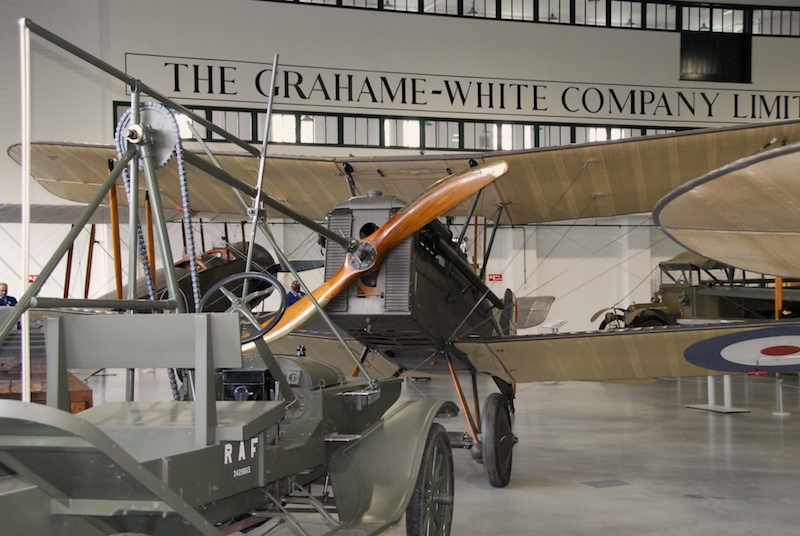
A Royal Aircraft Factory S.E.5a. The S.E.5a was deployed in 1917 and considered
to be one of the best fighters of WWI.
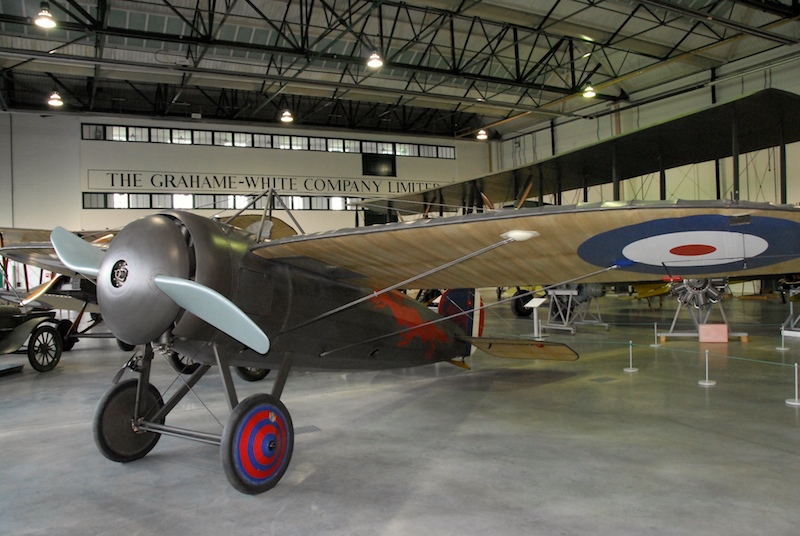
A reproduction of a Bristol M1C. The M1C was deployed in 1916. It is an impressive-looking
airplane. Although having some performance metrics superior to biplanes, these
monoplanes were used in only five squadrons, supposedly because of bias against
monoplanes.
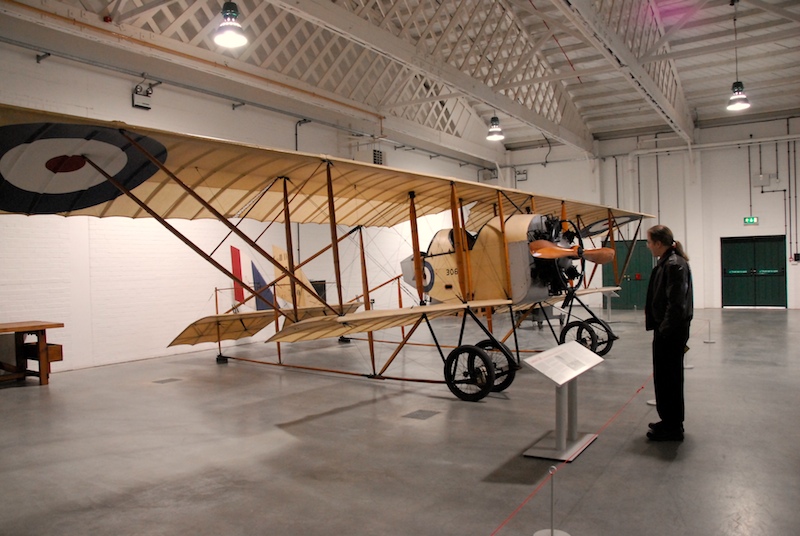
A Caudron G3. This bizarre-looking early-war plane was used for scouting.
Milestones of Flight Section
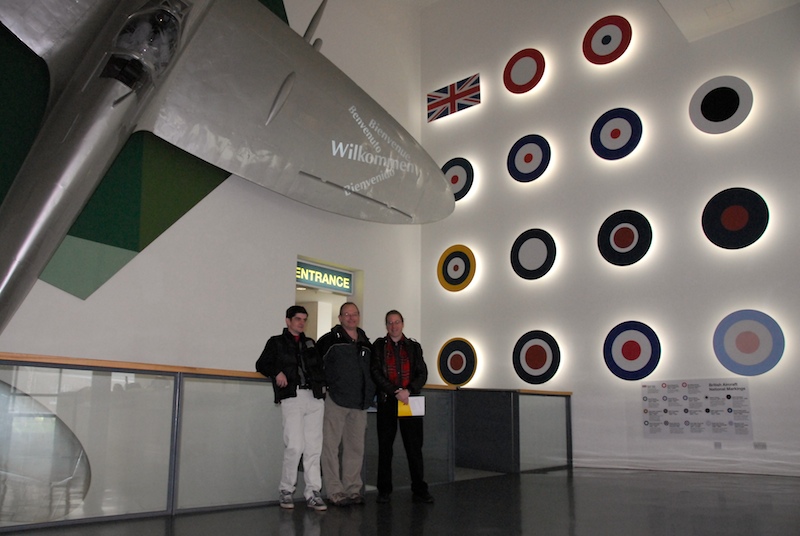
SF3, Wurzel, and Brooke at the entrance to the Milestones of Flight section
of the museum.
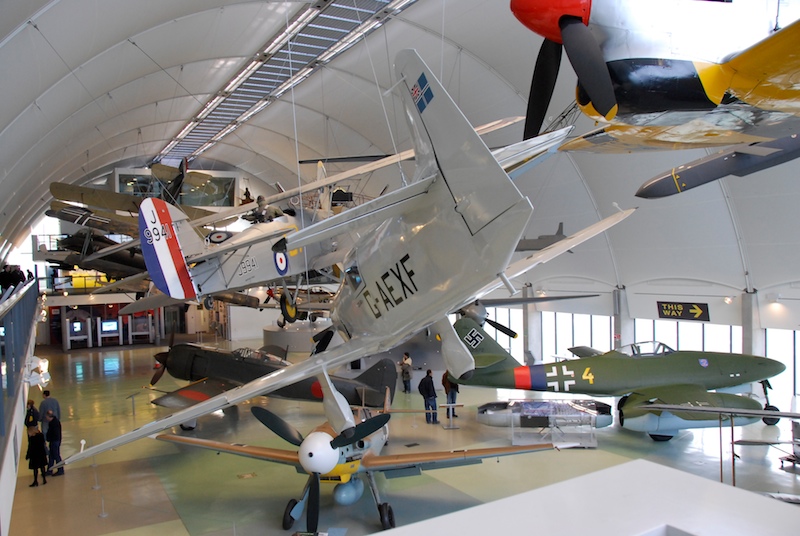
A view of the interior of the hangar. In the upper right (not all visible) is
a Tempest V. In the lower right is an Me 262A-2a that saw action in WWII. Just
to the left of the Me 262 is a Mosquito B35 (just its left wing and engine visible).
Some of the other aircraft are in following close-ups.
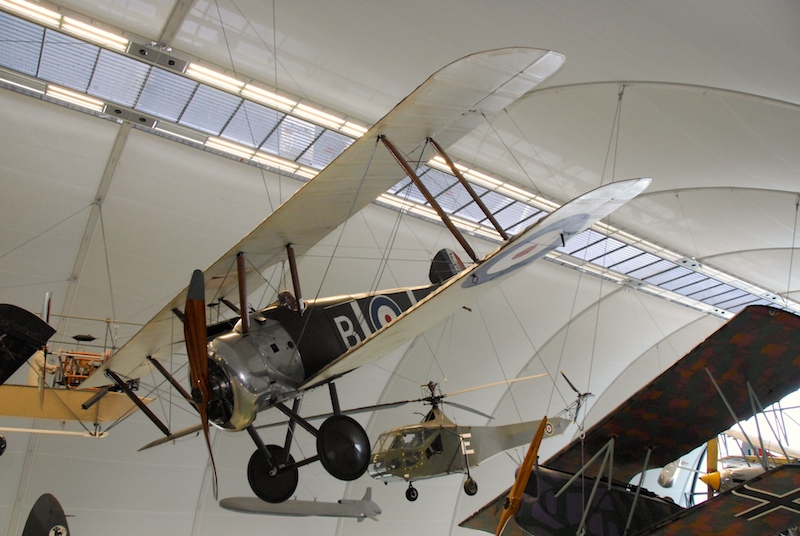
A Sopwith Camel. The allied fighter credited with the most kills in WWI.
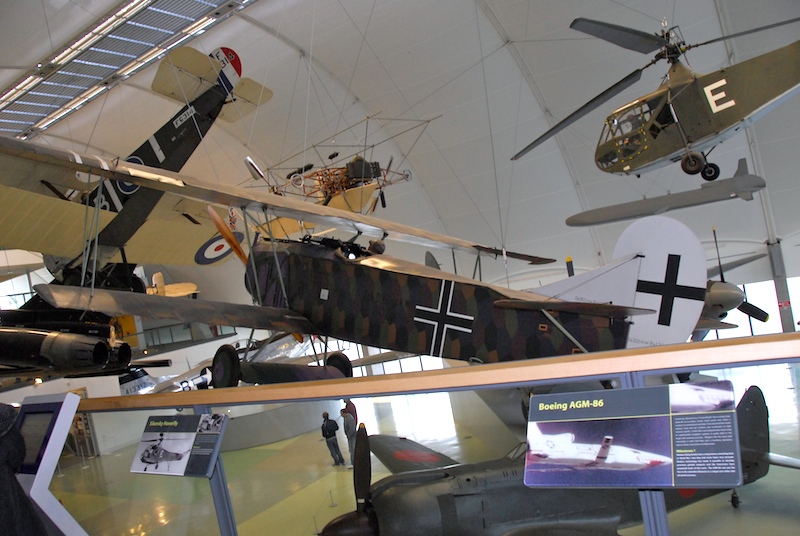
A Fokker D.VII. The D.VII was one of the best fighters in WWI.
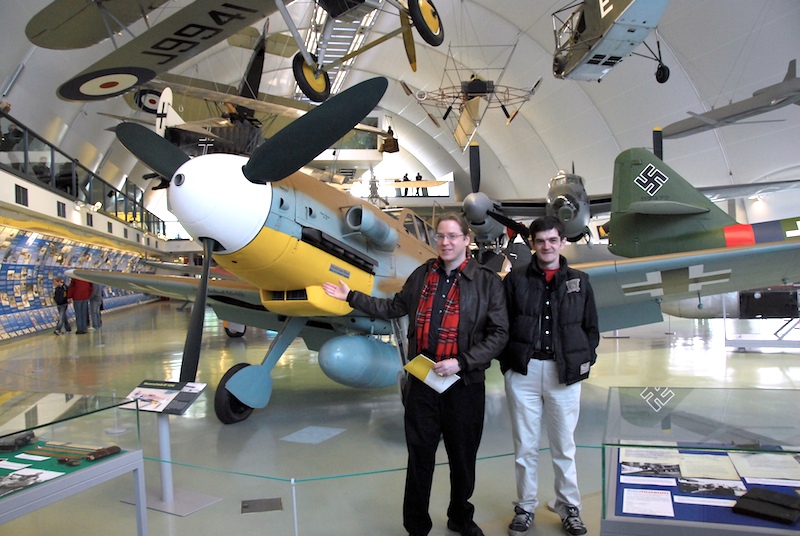
Brooke and SF3 in front of a Bf 109G-2. Based on diary of pilot Heinz Lüdemann
of 8/JG77, this one flew a sortie in North Africa in November, 1942 against
SAAF Bostons escorted by US P-40's, during which the escorts inflicted damage
upon both pilot and aircraft. A bit more of the Mosquito is visible in the background.
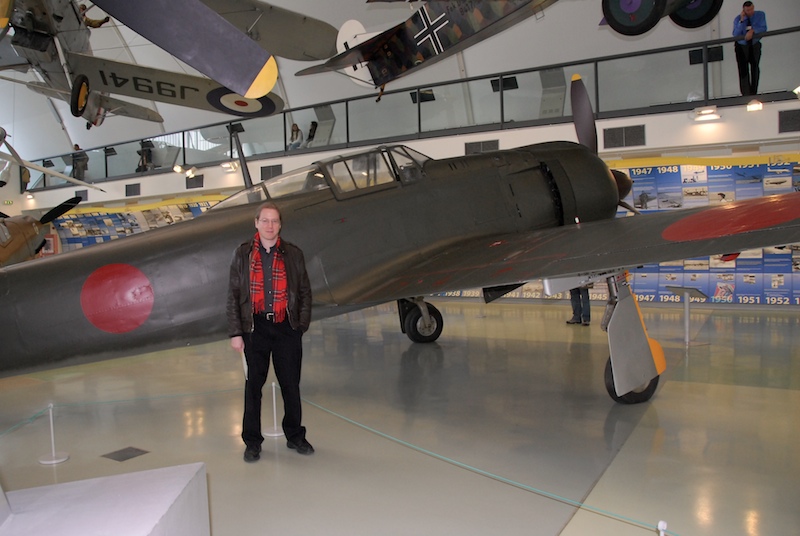
A Ki-100-1b.
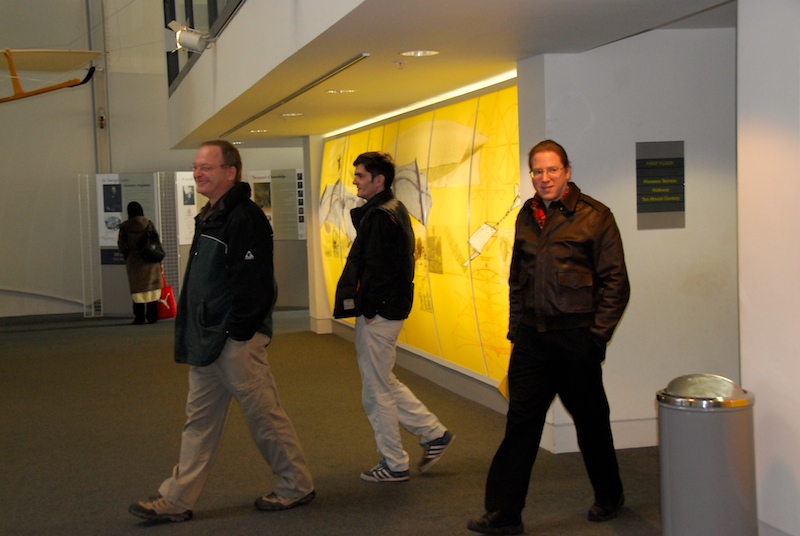
Traci's Abbey Road tribute picture of Wurzel, SF3, and Brooke.
Lunch
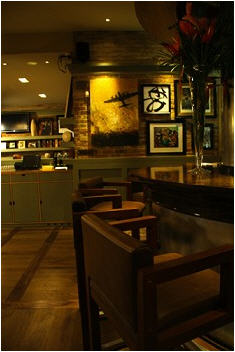
We went to a nice pub near the museum (The
Beaufort), where Wurzel bought us delicious food and drink. Traci and I
shared our meals of bangers and mash and steak-and-mushroom pie, and we had
pear ciders. It was excellent! Many thanks, Wurzel!
Battle of Britain Section
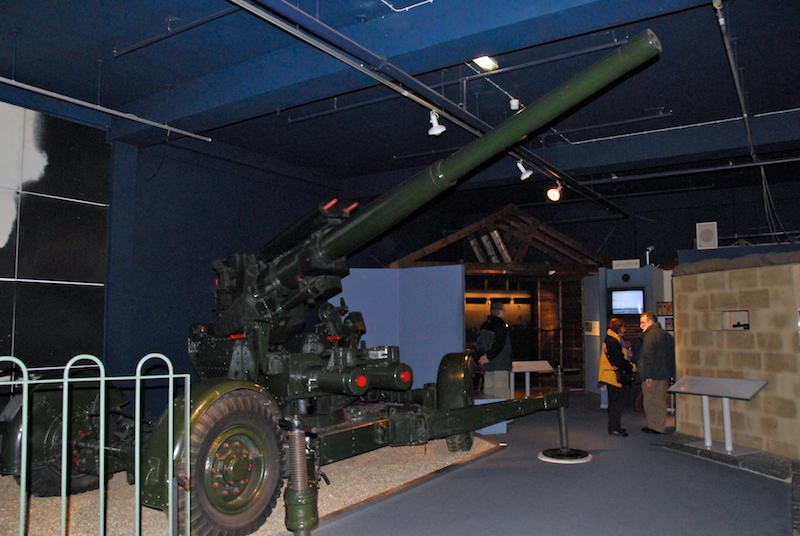
An anti-aircraft gun. SF3's grandmother was a gunner on such a gun during the
Battle of Britain.
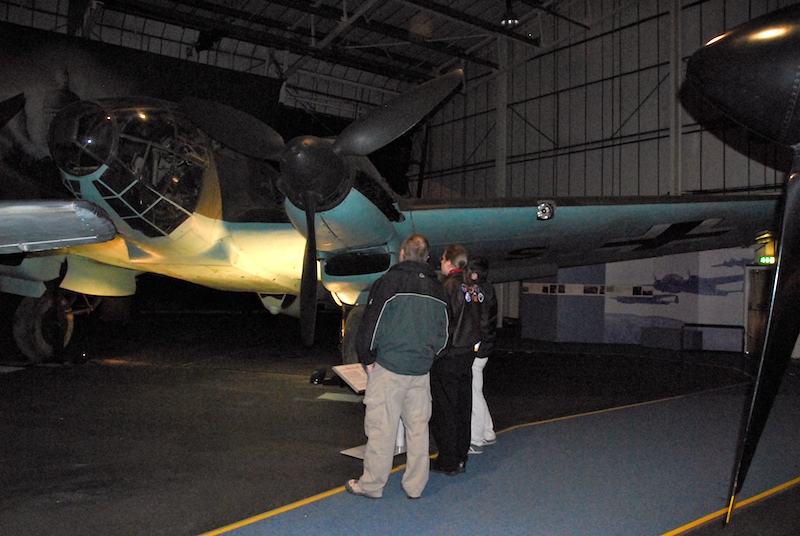
Wurzel, me, and SF3 taking a look at an He 111. We're talking about our hope
that the He 111 is added to Aces High before the next Battle of Britain scenario
and about how cool it looks -- sort of like a malevolent sea creature with its
curves and bullet-like fuselage.
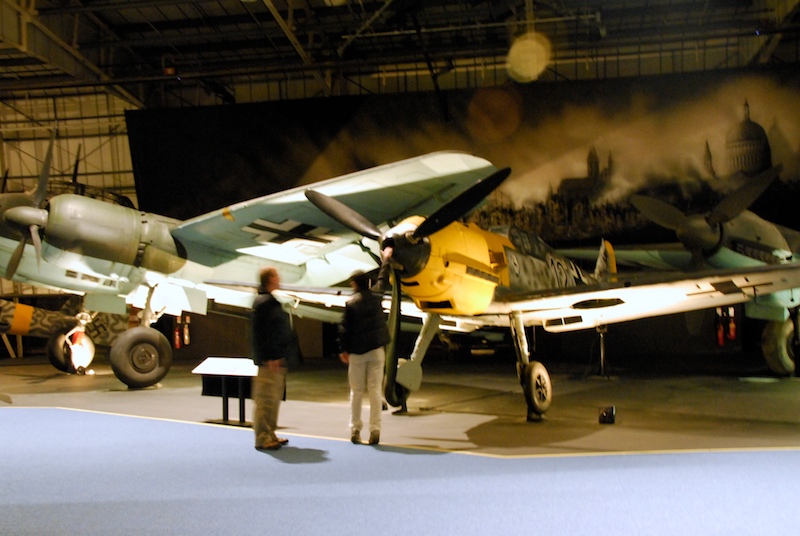
SF3 checking out a beatifully painted Bf 109E-3 while Wurzel looks on. (The
lighting was dim in here, so exposure times were long, leading to bluriness
if there was any motion.) On November 27, 1940, this Bf 109, piloted by Leutnant
Wolfgang Teumer of 2/JG51, was shot up over Kent by Flt Lt George P Christie
DFC flying a Spitfire of No.66 Squadron based at Biggin Hill. Teumer ditched
the damaged 109 at Manston.
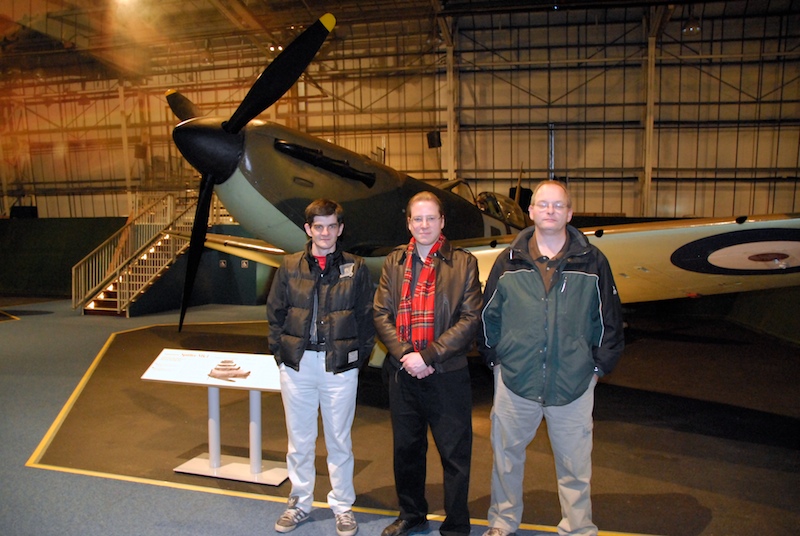
SF3, Brooke, and Wurzel in front of a Spitfire I. This Spitfire flew many missions
in the Battle of Britain with various pilots. On October 21, 1940, Pilot Officer
S J Hill (No. 609 Squadron, Middle Wallop) flew it and shared credit for shooting
down a Ju 88. On November 28, 1940, Hill flew it and received damage in a fight
with Bf 109's.
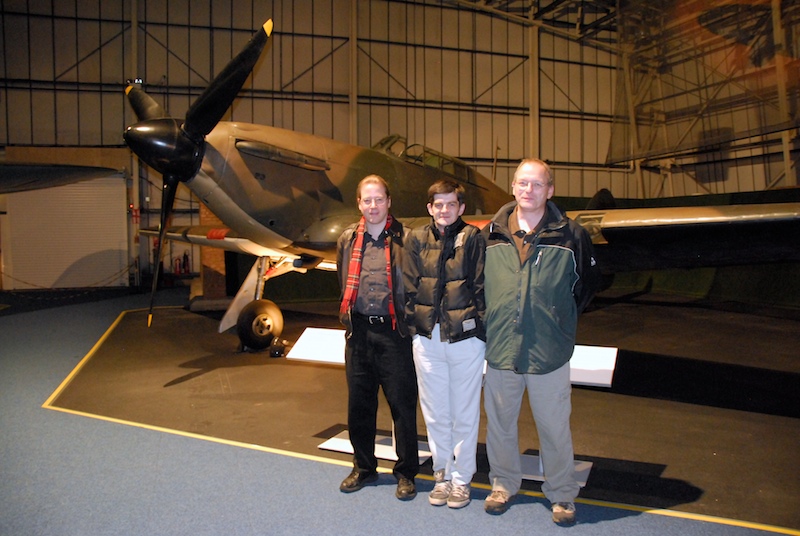
Brooke, SF3, and Wurzel in front of a Hurricane I. This aircraft flew missions
in the Battle of France with No. 607 Squadron in May, 1940. Afterwards, it flew
missions during the Battle of Britain with various pilots.
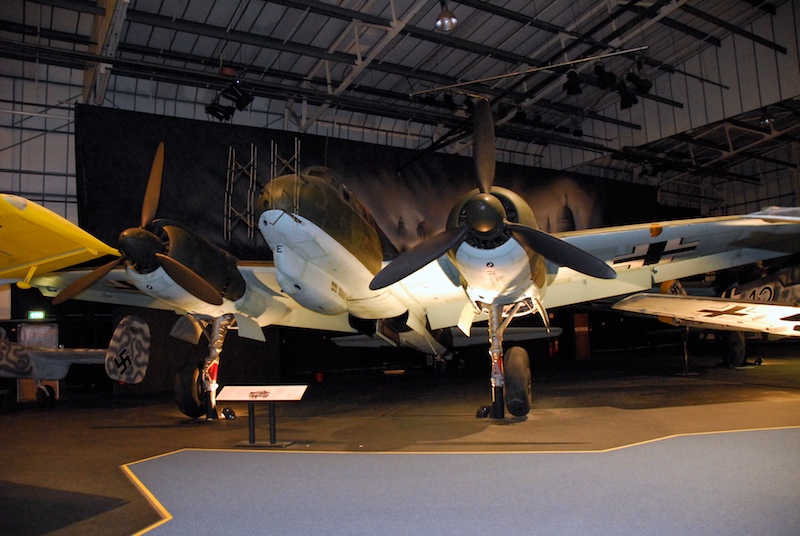
A Ju 88R-1, night-fighter variant. In 1943, this plane (with the latest FuG
202 Liechtenstein BC A.I radar and signals documents) was flown to Britain by
a defector who disliked the Nazi party. It was spotted over the channel by British
radar, and two SpitfireVb's were sent to intercept. The Ju 88 pilot managed
to communicate (by lowering gear, waggling wings, and firing flares) that he
wished to surrender. The intercepting Spitfires escorted it to Dyce aerodrome
where it was fired on and hit by anti-aircraft but managed to land.
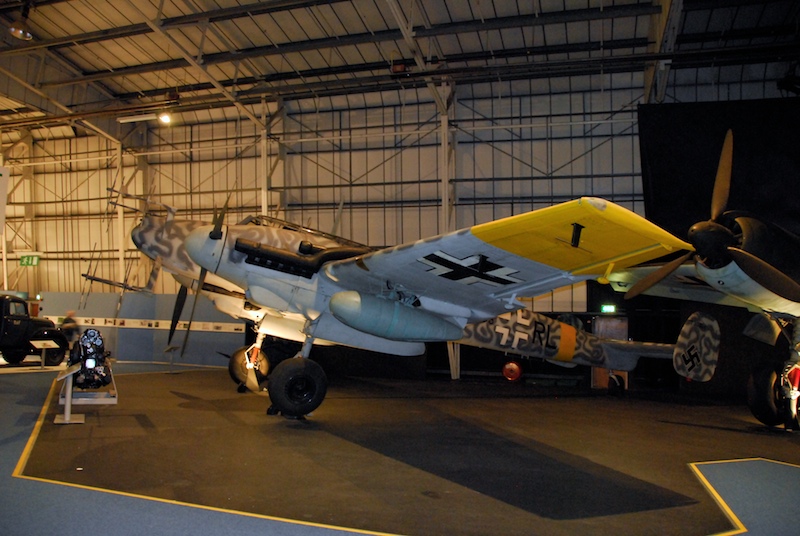
A Bf 110G-2, outfighted as a night fighter. This aircraft served with 1/NJG3
and was surrendered to allied forces in Denmark in 1945. Seeing the Bf 110 in
real life, one thing expecially stood out for us: its size. We knew it was a
big plane, of course, but sitting there next to a Ju 88, it looks almost the
same size. It is enormous compared to a Bf 109 or FW 190.
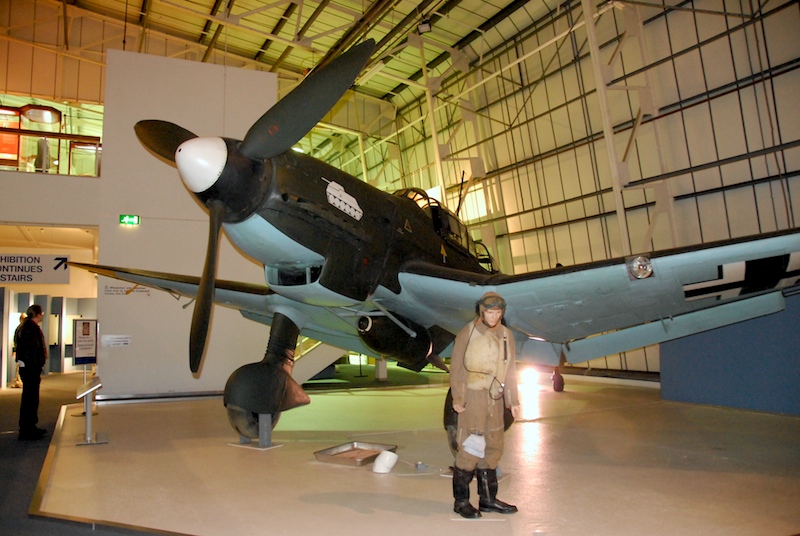
A Ju 87G-2. This aircraft was captured in a German factory.
Historic Hangars Section
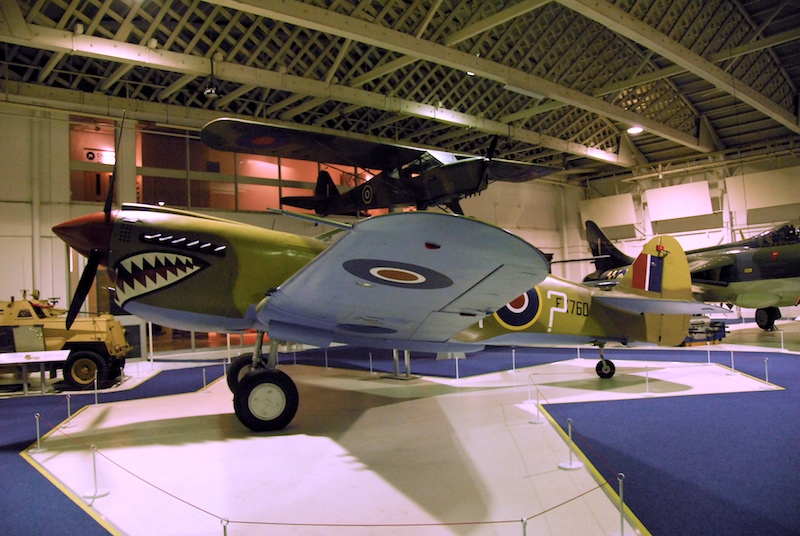
A Kittyhawk IV (P-40N). This aircraft was assembled from various aircraft wrecks
discovered in New Guinea in the 1970's. The fuselage was from a P-40 assigned
to No. 80 Squadron RAAF in 1944 and flew convoy-protection patrols, reconnaisance,
and air cover for allied landings at Hollandia.
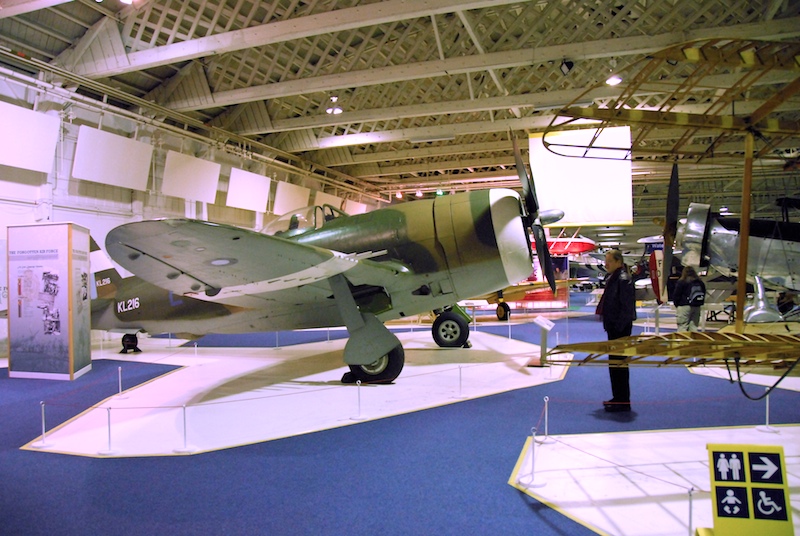
A Thunderbolt II (P-47D-40).
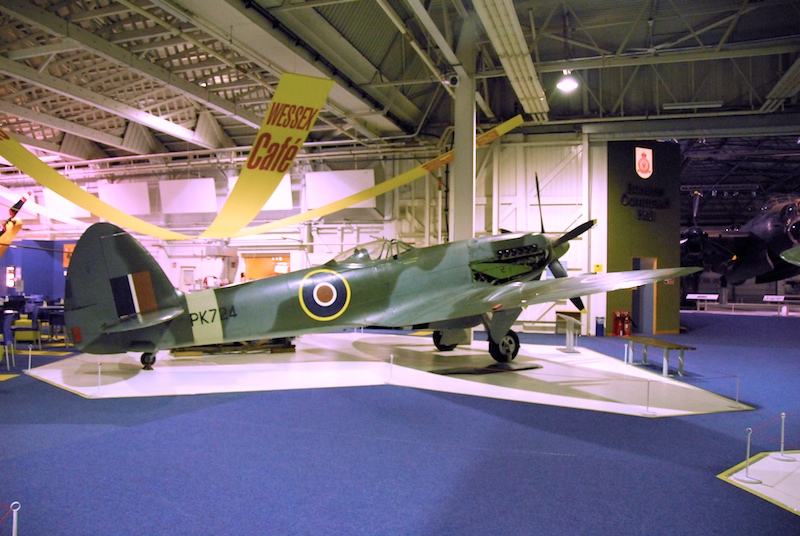
A Spitfire F24.
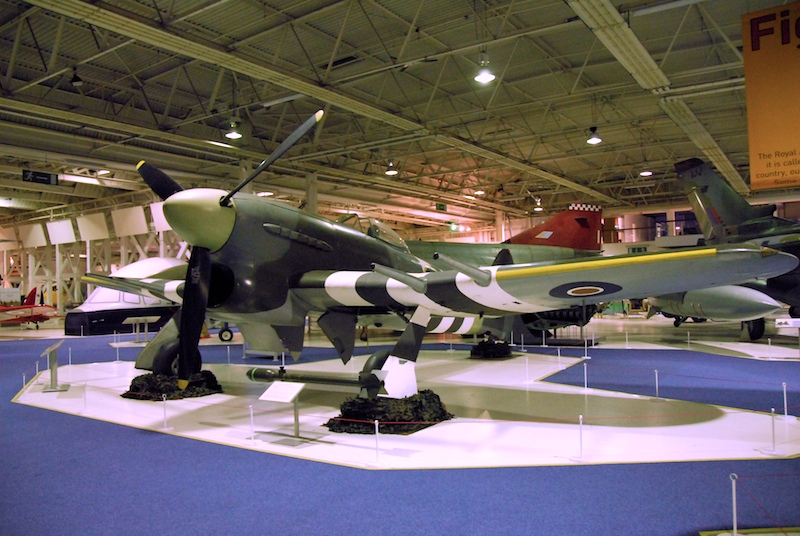
A Typhoon Ib. This aircraft is the world's only remaining Typhoon!
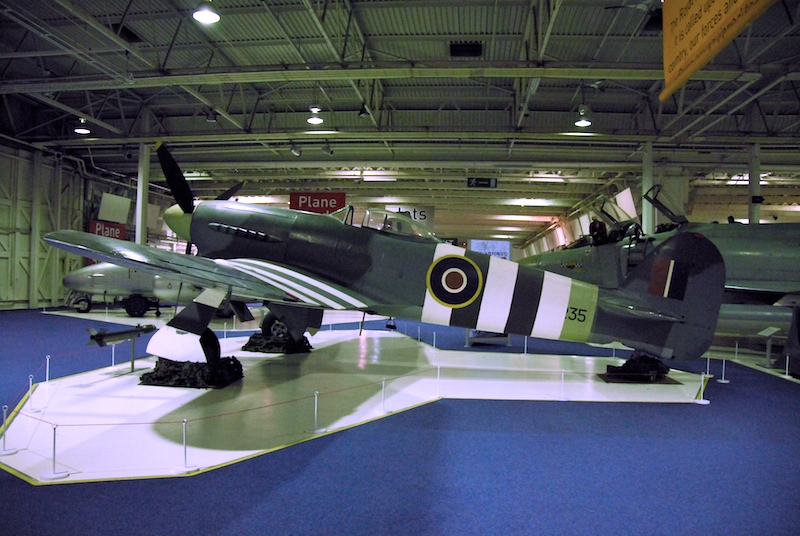
Another view of the beautiful Typhoon Ib.
Bomber Hall Section
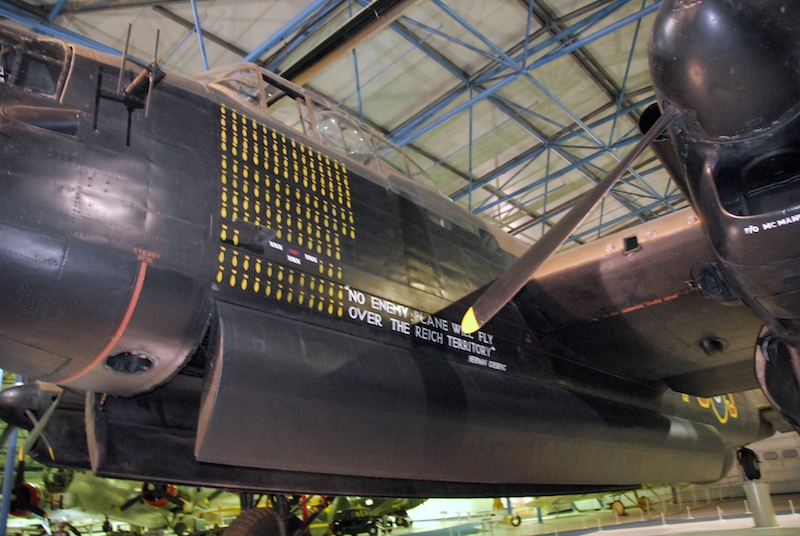
The front-left side of a Lancaster I. This aircraft first flew with No. 83 Squadron
as OL-Q (thus called "Queenie") then No. 467 Squadron as PO-S (thus
called "Sugar"). This aircraft flew an incredible 137 bombing missions
from 1942 through the end of WWII. After the end of hostilities, it flew many
missions bringing POW's back from Germany. Click here
for accounts of some of its amazing combat missions (bombing, contact with
enemy fighters and flak, battle damage, collisions, wild maneuvering, escapes,
etc.).
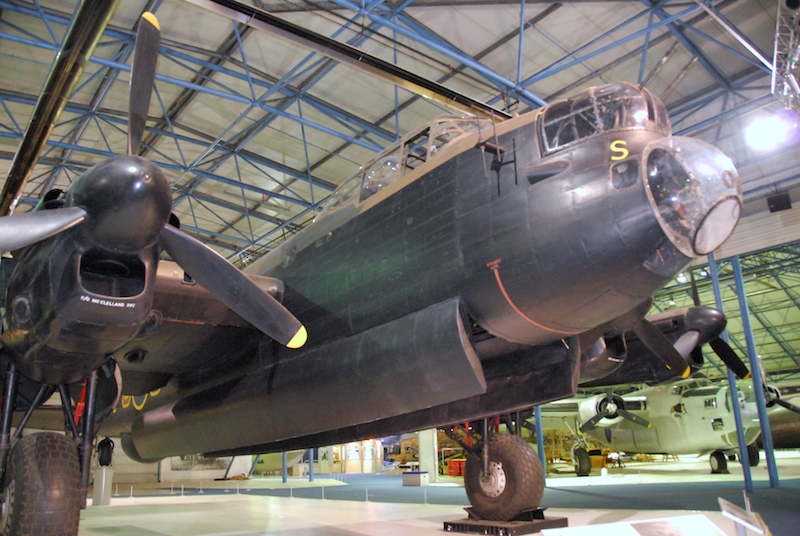
Another view of the amazing Sugar / Queenie.
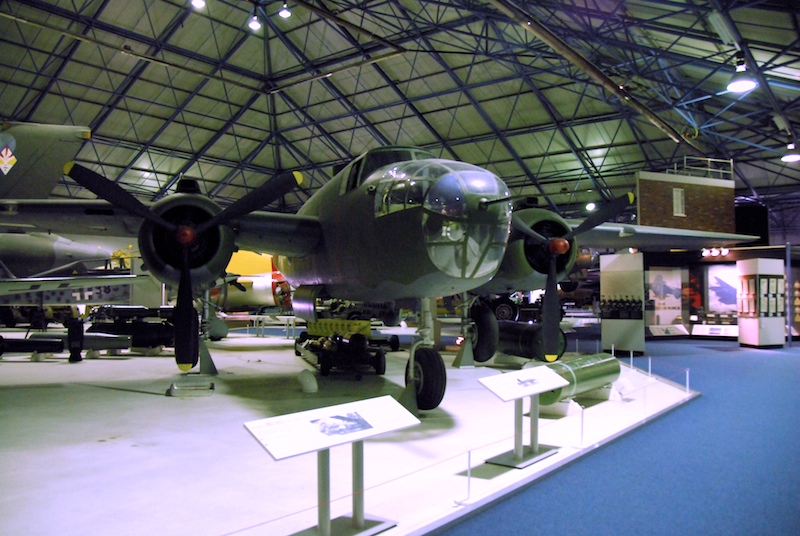
A B-25J.
Outside
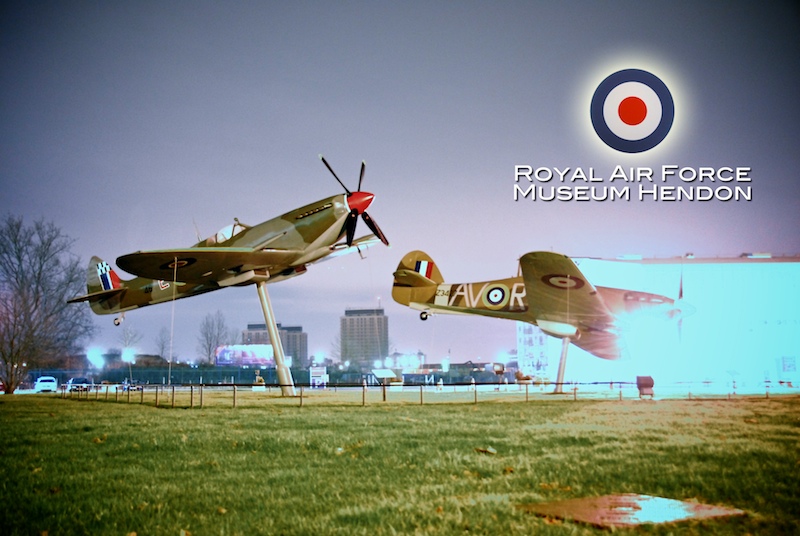
A night shot of the Spitfire and Hurricane mounted outside the museum.
London
This was my and Traci's first trip to London. It was excellent, and so was
meeting up with SF3, Wurzel, and Laura. They are excellent folks and we hope
that they can some day visit us in the US in Seattle.
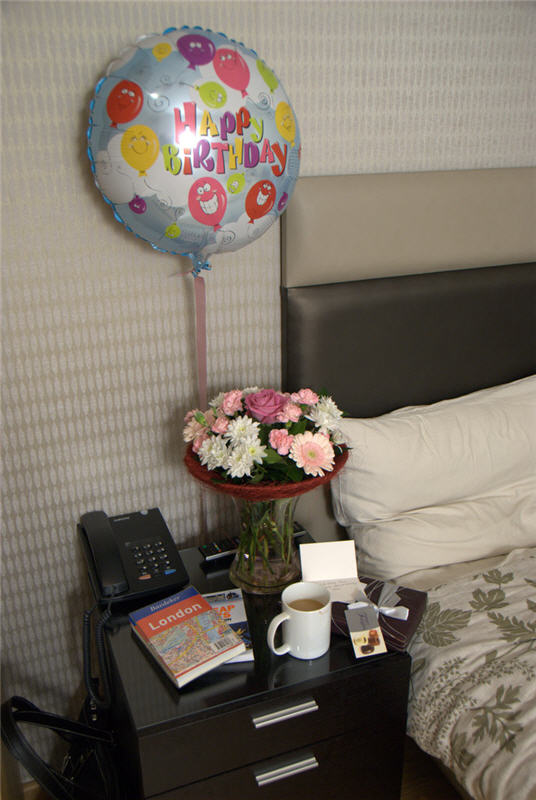
Very nice gifts from Wurzel and Laura -- an excellent travel guide to London
and flowers in nice vase, chocolates, and ballon for Traci on her birthday.
Thank you, Wurzel and Laura. She was so very happy and surprised!
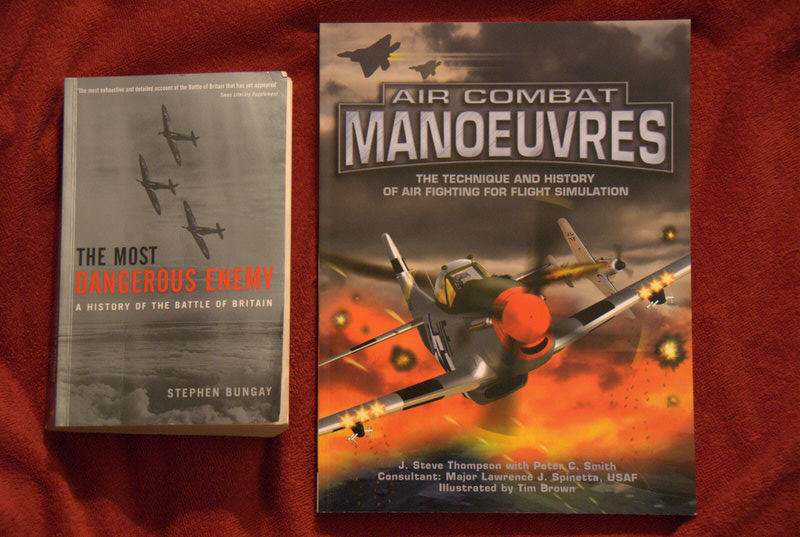
Excellent gifts from SF3: a history of the Battle of Britain and a book we were
enjoying in the shop at the RAF museum. Thank you very much, SF3!
For sights in London other than the RAF Museum, we saw Westminster Abbey, the
British Museum, the Tower of London, various parks, the play Twelfth Night,
Buckingham Palace, the Churchill Museum and War Cabinet Rooms, Tate Britain,
and historic pubs. Here is one picture for each.
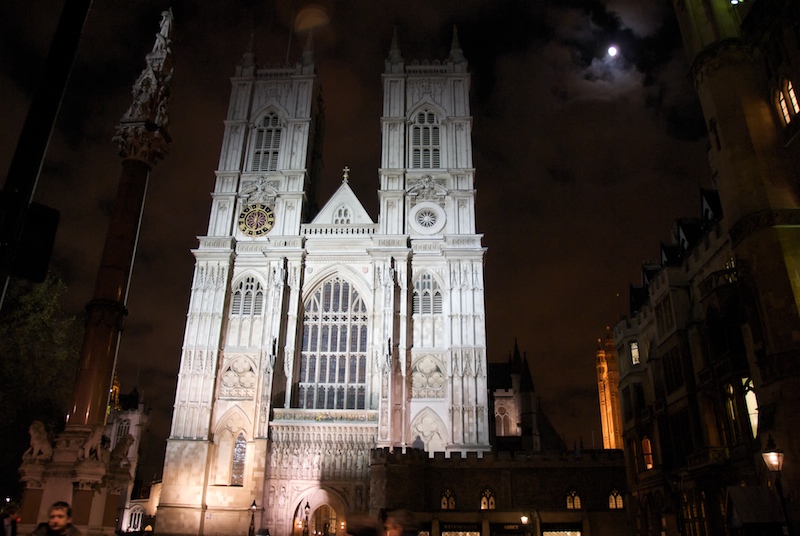
A beautiful night shot of Westminster Abbey. This place is beautiful outside
and astonishing inside, both in terms of its splendor and from the fact that
as you walk around, you are physically in touch with places of such history.
It is a working church, and it is not full of plexiglass and barriers. You walk
where Kings and Queens were coronated; you are physically right next to and
in touching distance of the stone caskets containing the remains of Kings and
Queens of England (starting, I believe, with Henry III, who died in 1276, and
continuing with many others); you walk over the engraved floor stones marking
the graves of people such as Charles Darwin, Isaac Newton, James Clerk Maxwell,
Ernest Rutherford, and Rudyard Kipling.
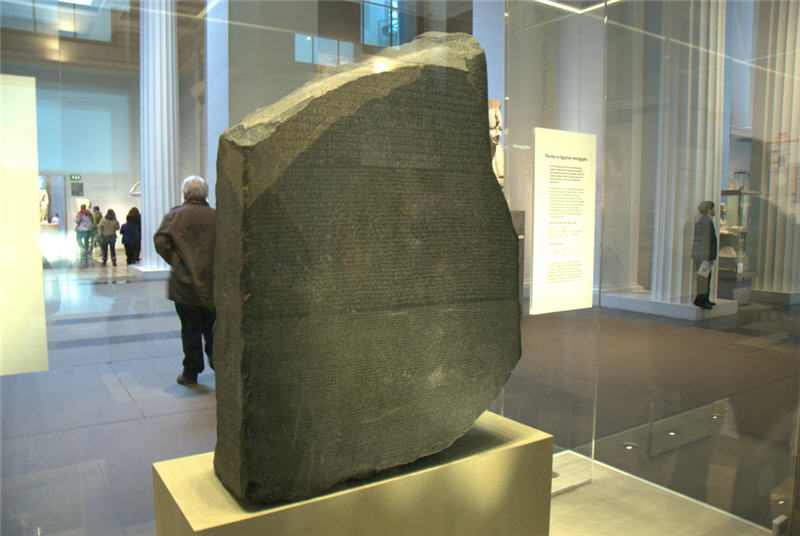
The Rosetta Stone at the British Museum. This place also is amazing. It has
a multitude of historical objects. We had time only to see a portion -- items
such as from the first cities of mankind in Mesopotamia (4000-3000 BC); from
Egypt (statues, sarcophagi, mummies, tablets, approx. 3000 BC onward), from
Greece and Rome (1500 BC onward, 3500-year-old vases, Roman sculptures, the
friezes, metopes, and pediments of the Parthenon), and so on. As with Westminster
Abbey, this place is amazing to me, for while there are some things behind plexiglass
or roped off, a lot of it is not, and you walk right up to touching distance.
Part of me is appalled that oblivious dolts and snotty nosed children can wipe
their hands all over artifacts that are 5000 years old, but part of me is happy
that I can get so close.
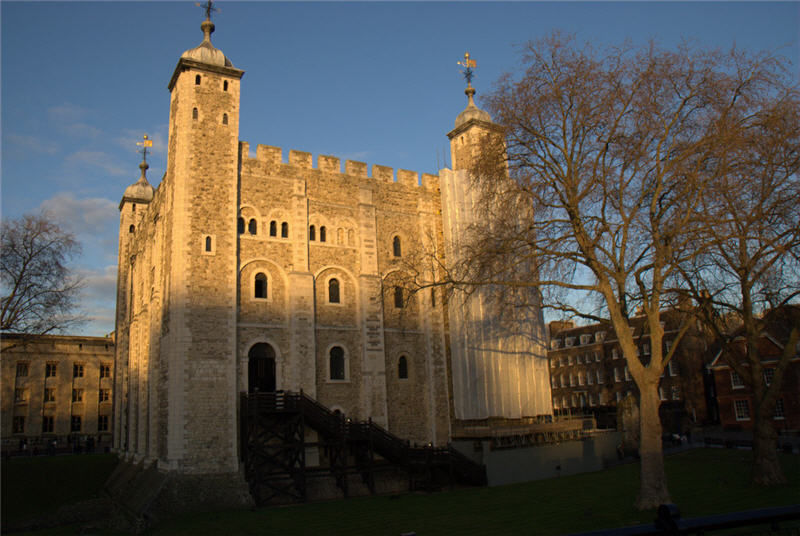
The White Tower at the Tower of London, built by command of William the Conqueror
in 1078.
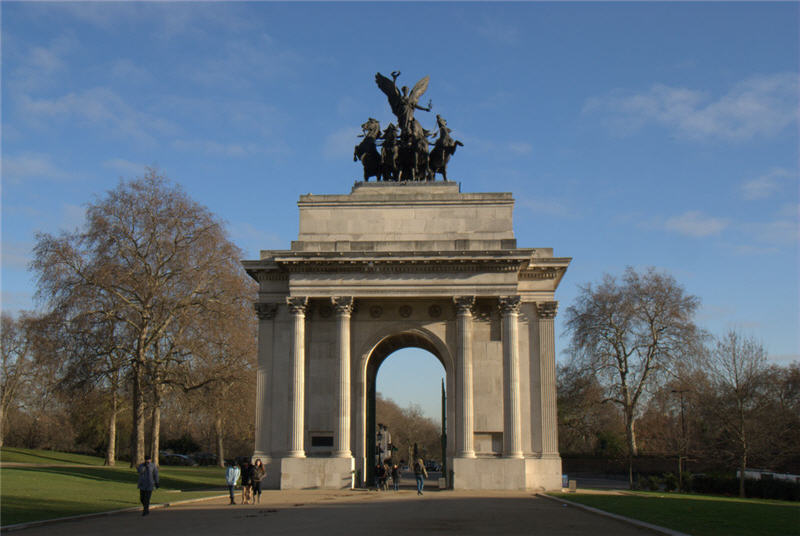
Wellington Arch at Hyde Park Corner, built in 1830 to commemorate British victories
in the Napoleonic Wars.

Inside the theater after Twelfth Night.
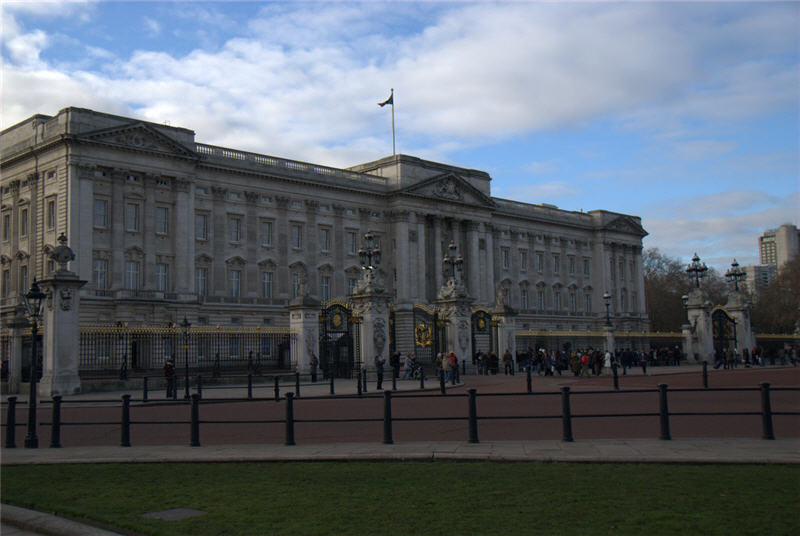
Buckingham Palace.
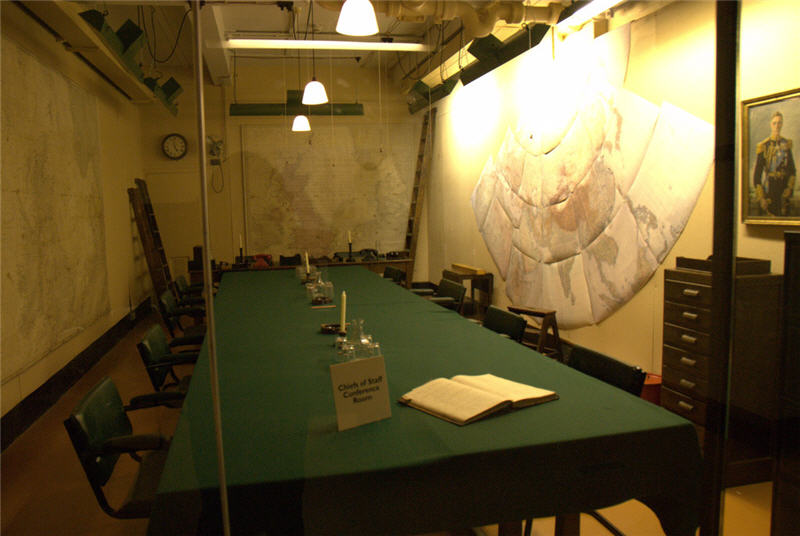
The conference room for the chiefs of staff. This is one room of several (bedrooms,
offices, dining room, map room, communications rooms, etc.) in an underground
bunker that was the British control center during the Battle of Britain, all
with original maps, furnishings, etc.
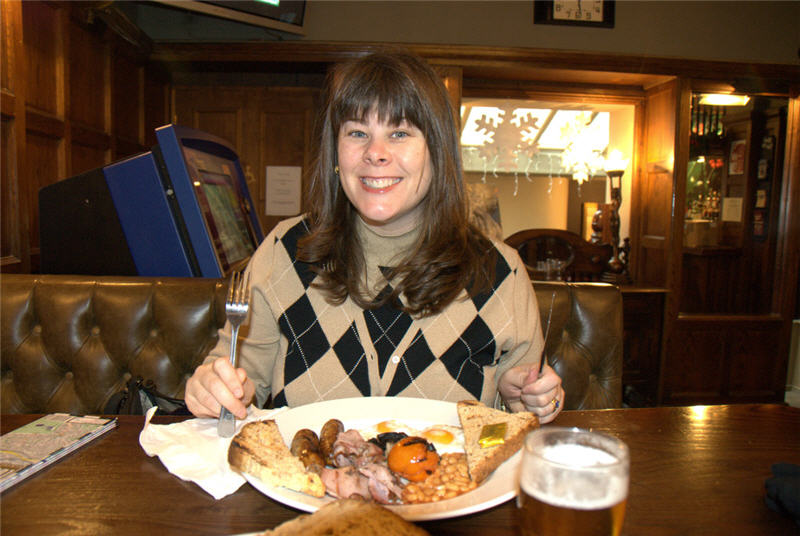
Traci on her birthday, about to enjoy an English breakfast at the White Horse,
established in 1873. We also walked by the Windsor Castle pub, established 1835,
rumored to have the bones of Thomas Paine buried in the basement. We had some
delicious curries on other nights.










